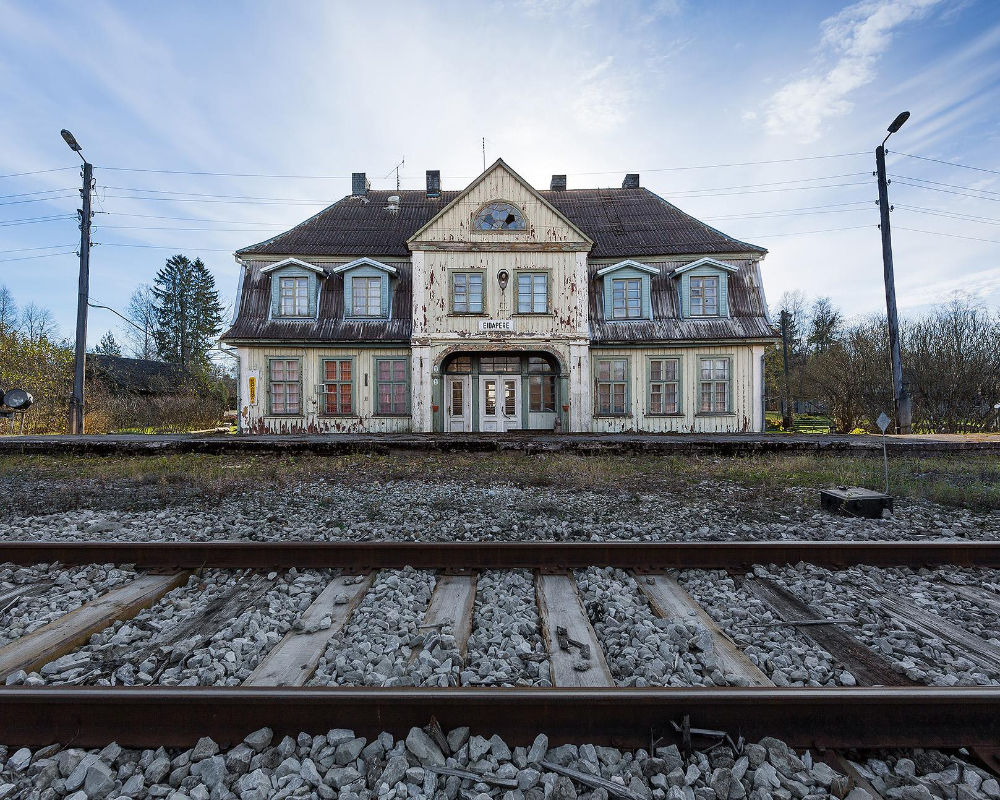 The exhibition is an overview of the best of Estonian railway stations. The course of Estonian railway stations has taken many sharp turns in the last nearly 150 years. A fair number of intact station ensembles can generally be found even where the rails have been removed. It was with this knowledge that photographer Kaido Haagen documented the most architecturally-diverse Estonian railway stations over the years 2014–2015. Both remote waiting halls and crumbling station houses were caught in frame.
The exhibition is an overview of the best of Estonian railway stations. The course of Estonian railway stations has taken many sharp turns in the last nearly 150 years. A fair number of intact station ensembles can generally be found even where the rails have been removed. It was with this knowledge that photographer Kaido Haagen documented the most architecturally-diverse Estonian railway stations over the years 2014–2015. Both remote waiting halls and crumbling station houses were caught in frame.
Today, the railways are at their longest total length in history, stretching over 2,100 kilometres. Paradoxically, however, fewer station houses are functioning than ever before. The opening and closing of lines has brought along a change in the role of the railway stations dotted along them.
Tracks have been laid and then pulled up again according to economic and social shifts of the times. Railway architecture vividly reflects the changes that transpire in society. The origins of the railway network in Estonia can be tied firstly to the Russian Empire’s freight transport – a Paldiski–Tallinn–Narva–Gatchina line was opened in 1870. Tabivere Station (1877), which is one of the only original waiting halls of the Baltic railway that has been preserved, is rich in décor (just as most Imperial-era wooden stations) and small, since it was built exclusively to service passengers. Estonia’s newest station, on the contrary, is an entirely different matter. Koidula Railway Station, which was finished in 2011, interlinks everything necessary for smooth operations – in addition to serving as a freight- and a passenger station with a classical waiting hall, it also houses offices. The exhibition makes it clear that fate smiled upon stations built in the 1930s according to standard design projects. They were erected en masse for the formerly dense network, and met a demand for decent passenger stations. The buildings’ compactness and modern layouts have today enabled their easy reconfiguration into dwellings or any other public buildings. A number of railway stations have been put to new use – for instance, Abja Station is now a place of worship. One current issue is the construction of the Rail Baltic railway, which will connect Berlin and Tallinn by rail – in the era of high-speed trains, there will only be space for a handful of stops along the line. What kind of an impact will the new railroad have on the former station network?
Tõnu Õnnepalu, a traveller and author has written: “Mankind’s great undertakings have always been irrational; they always embody a single secret, baseless yearning, even though they are spoken about in terms of benefit and functionality. The railroad is one of these—the railroad is undoubtedly a great undertaking of the 19th and still-young 20th century. A leap into infinity. A wild dream.” Kaido Haagen’s photos reflect railway stations that are places for waiting, meeting, and traveling onward.
Kaido Haagen (b 1966) is one of Estonia’s most renowned photographers and has been professionally active in the field for the last 28 years. Haagen is a dedicated architectural photographer, but is also involved in nature photography, especially the underwater type. He organised a total of 11 solo exhibitions over the years 2001–2015, and has won a multitude of awards in nature- and underwater-photography competitions.
The exhibition is accompanied by an essay by Tõnu Õnnepalu.
The exhibition is supported by the Cultural Endowment of Estonia.
























